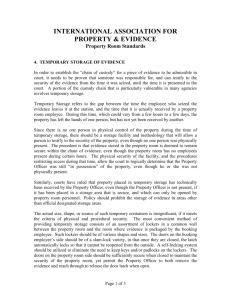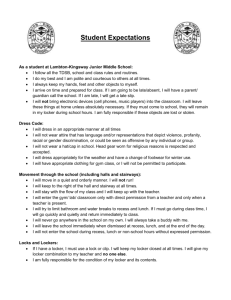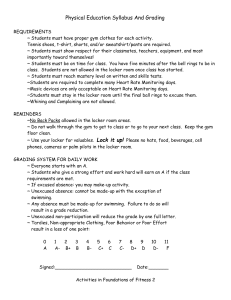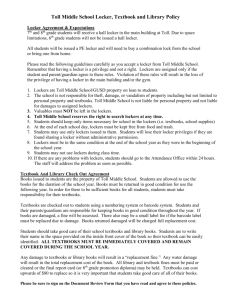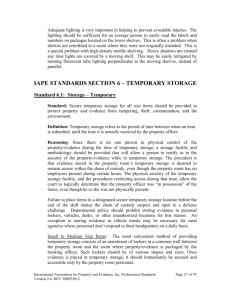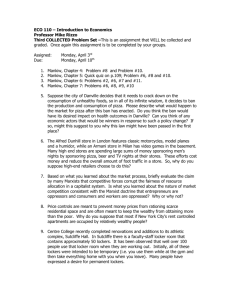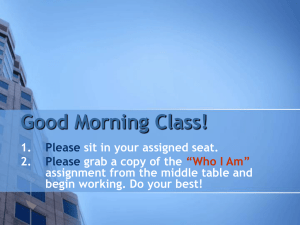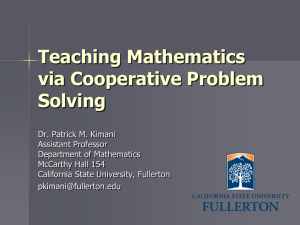FCMTC summer 2012 Math Immersion Workshop Locker Problems
advertisement
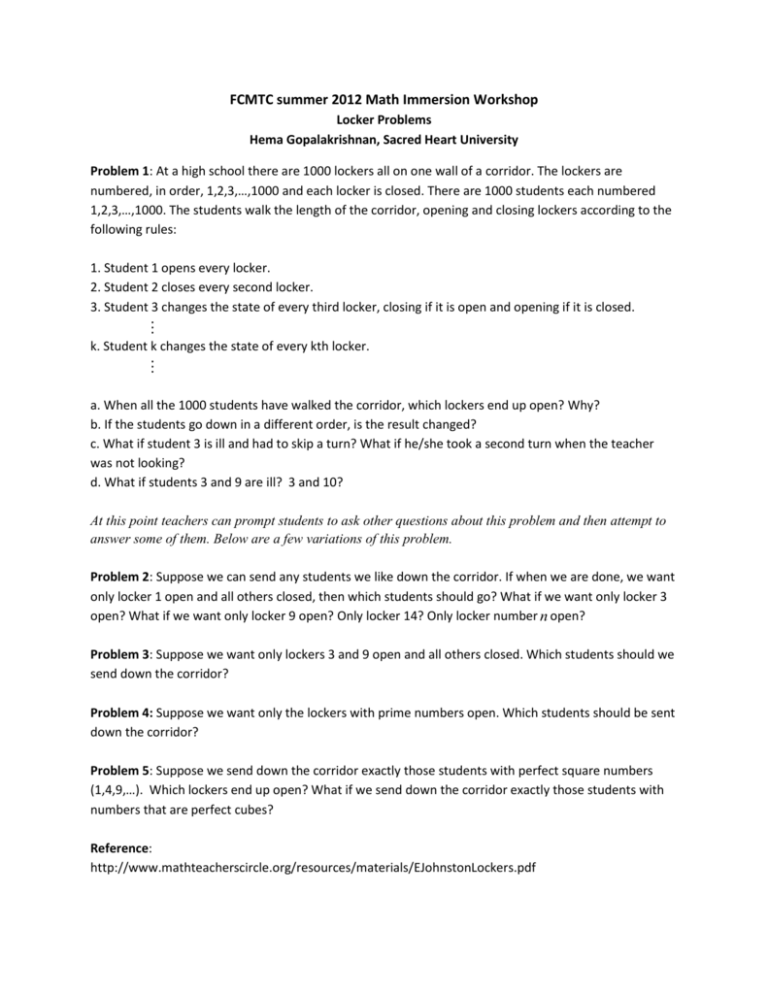
FCMTC summer 2012 Math Immersion Workshop Locker Problems Hema Gopalakrishnan, Sacred Heart University Problem 1: At a high school there are 1000 lockers all on one wall of a corridor. The lockers are numbered, in order, 1,2,3,…,1000 and each locker is closed. There are 1000 students each numbered 1,2,3,…,1000. The students walk the length of the corridor, opening and closing lockers according to the following rules: 1. Student 1 opens every locker. 2. Student 2 closes every second locker. 3. Student 3 changes the state of every third locker, closing if it is open and opening if it is closed. k. Student k changes the state of every kth locker. a. When all the 1000 students have walked the corridor, which lockers end up open? Why? b. If the students go down in a different order, is the result changed? c. What if student 3 is ill and had to skip a turn? What if he/she took a second turn when the teacher was not looking? d. What if students 3 and 9 are ill? 3 and 10? At this point teachers can prompt students to ask other questions about this problem and then attempt to answer some of them. Below are a few variations of this problem. Problem 2: Suppose we can send any students we like down the corridor. If when we are done, we want only locker 1 open and all others closed, then which students should go? What if we want only locker 3 open? What if we want only locker 9 open? Only locker 14? Only locker number n open? Problem 3: Suppose we want only lockers 3 and 9 open and all others closed. Which students should we send down the corridor? Problem 4: Suppose we want only the lockers with prime numbers open. Which students should be sent down the corridor? Problem 5: Suppose we send down the corridor exactly those students with perfect square numbers (1,4,9,…). Which lockers end up open? What if we send down the corridor exactly those students with numbers that are perfect cubes? Reference: http://www.mathteacherscircle.org/resources/materials/EJohnstonLockers.pdf A Divide and Conquer Game Two players A and B alternate turns. The winner is the last person to make a legal move. Start with 100 pennies. A legal move consists of removing a proper divisor of the number of pennies left. Thus on the first move, A could remove 1, 2, 4, 5, 10, 20, 25 or 50 pennies but not 100 pennies. The game ends when there is exactly 1 penny left (since there are no legal moves possible at this point). What is the winning strategy? Reference Paul Zeitz’s video lectures on the “Art and Craft of Mathematical Problem Solving” available at http://www.thegreatcourses.com

